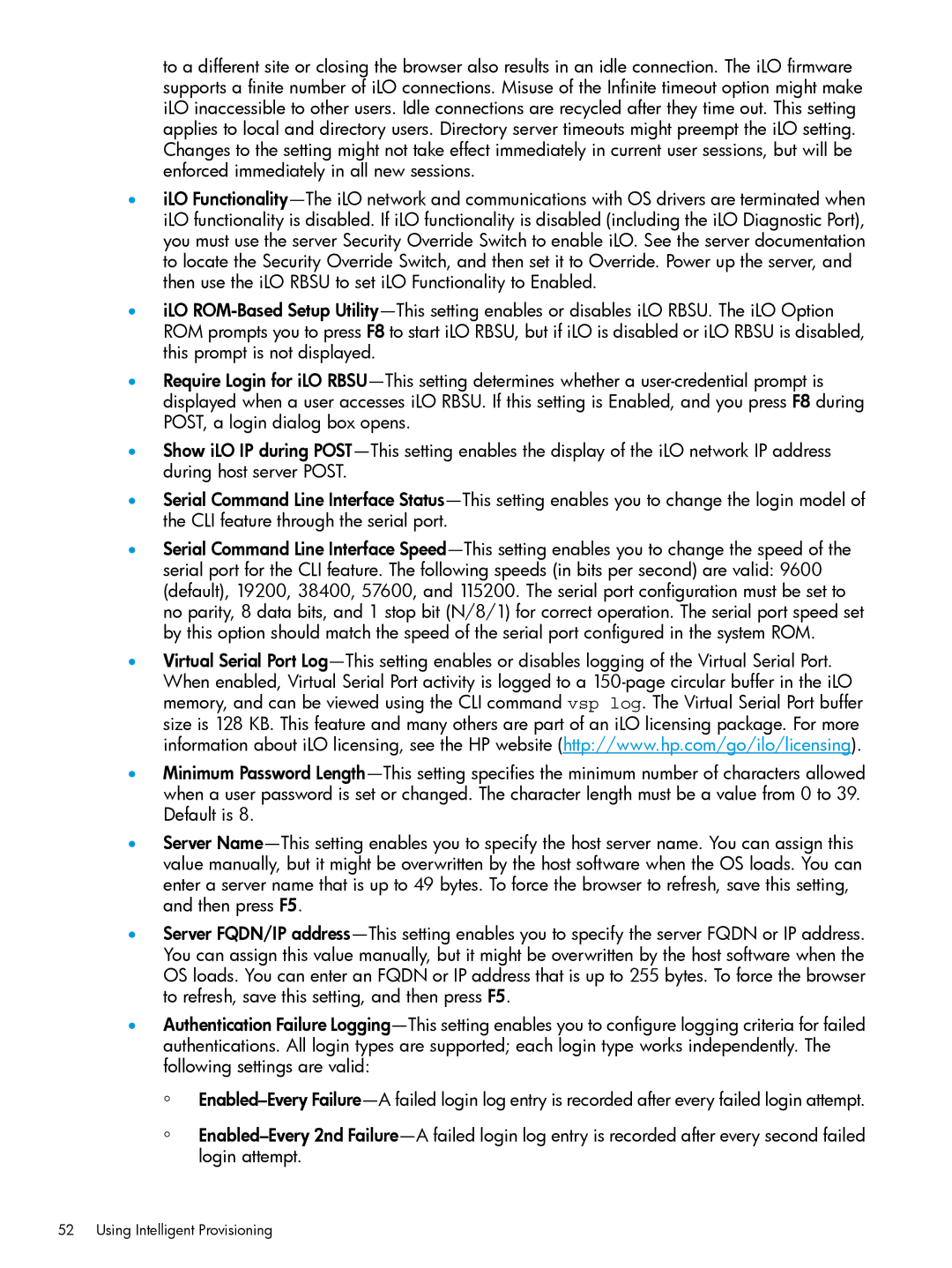to a different site or closing the browser also results in an idle connection. The iLO firmware supports a finite number of iLO connections. Misuse of the Infinite timeout option might make iLO inaccessible to other users. Idle connections are recycled after they time out. This setting applies to local and directory users. Directory server timeouts might preempt the iLO setting. Changes to the setting might not take effect immediately in current user sessions, but will be enforced immediately in all new sessions.
•iLO Functionality—The iLO network and communications with OS drivers are terminated when iLO functionality is disabled. If iLO functionality is disabled (including the iLO Diagnostic Port), you must use the server Security Override Switch to enable iLO. See the server documentation to locate the Security Override Switch, and then set it to Override. Power up the server, and then use the iLO RBSU to set iLO Functionality to Enabled.
•iLO ROM-Based Setup Utility—This setting enables or disables iLO RBSU. The iLO Option ROM prompts you to press F8 to start iLO RBSU, but if iLO is disabled or iLO RBSU is disabled, this prompt is not displayed.
•Require Login for iLO RBSU—This setting determines whether a user-credential prompt is displayed when a user accesses iLO RBSU. If this setting is Enabled, and you press F8 during POST, a login dialog box opens.
•Show iLO IP during POST—This setting enables the display of the iLO network IP address during host server POST.
•Serial Command Line Interface Status—This setting enables you to change the login model of the CLI feature through the serial port.
•Serial Command Line Interface Speed—This setting enables you to change the speed of the serial port for the CLI feature. The following speeds (in bits per second) are valid: 9600 (default), 19200, 38400, 57600, and 115200. The serial port configuration must be set to no parity, 8 data bits, and 1 stop bit (N/8/1) for correct operation. The serial port speed set by this option should match the speed of the serial port configured in the system ROM.
•Virtual Serial Port Log—This setting enables or disables logging of the Virtual Serial Port. When enabled, Virtual Serial Port activity is logged to a 150-page circular buffer in the iLO memory, and can be viewed using the CLI command vsp log. The Virtual Serial Port buffer size is 128 KB. This feature and many others are part of an iLO licensing package. For more information about iLO licensing, see the HP website (http://www.hp.com/go/ilo/licensing).
•Minimum Password Length—This setting specifies the minimum number of characters allowed when a user password is set or changed. The character length must be a value from 0 to 39. Default is 8.
•Server Name—This setting enables you to specify the host server name. You can assign this value manually, but it might be overwritten by the host software when the OS loads. You can enter a server name that is up to 49 bytes. To force the browser to refresh, save this setting, and then press F5.
•Server FQDN/IP address—This setting enables you to specify the server FQDN or IP address. You can assign this value manually, but it might be overwritten by the host software when the OS loads. You can enter an FQDN or IP address that is up to 255 bytes. To force the browser to refresh, save this setting, and then press F5.
•Authentication Failure Logging—This setting enables you to configure logging criteria for failed authentications. All login types are supported; each login type works independently. The following settings are valid:
